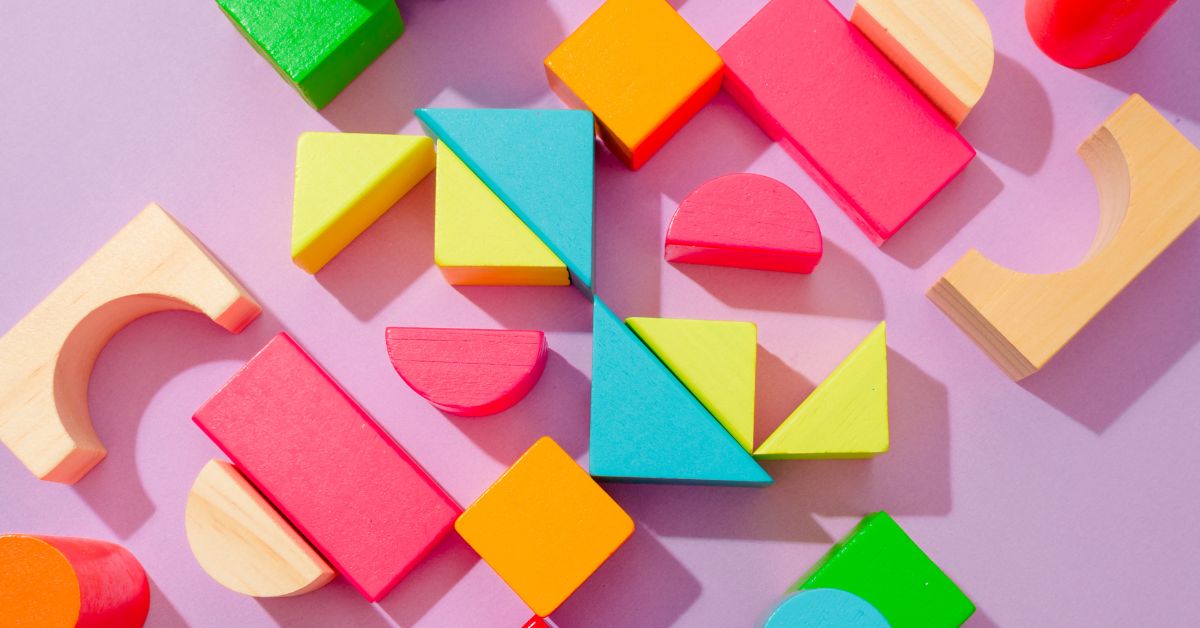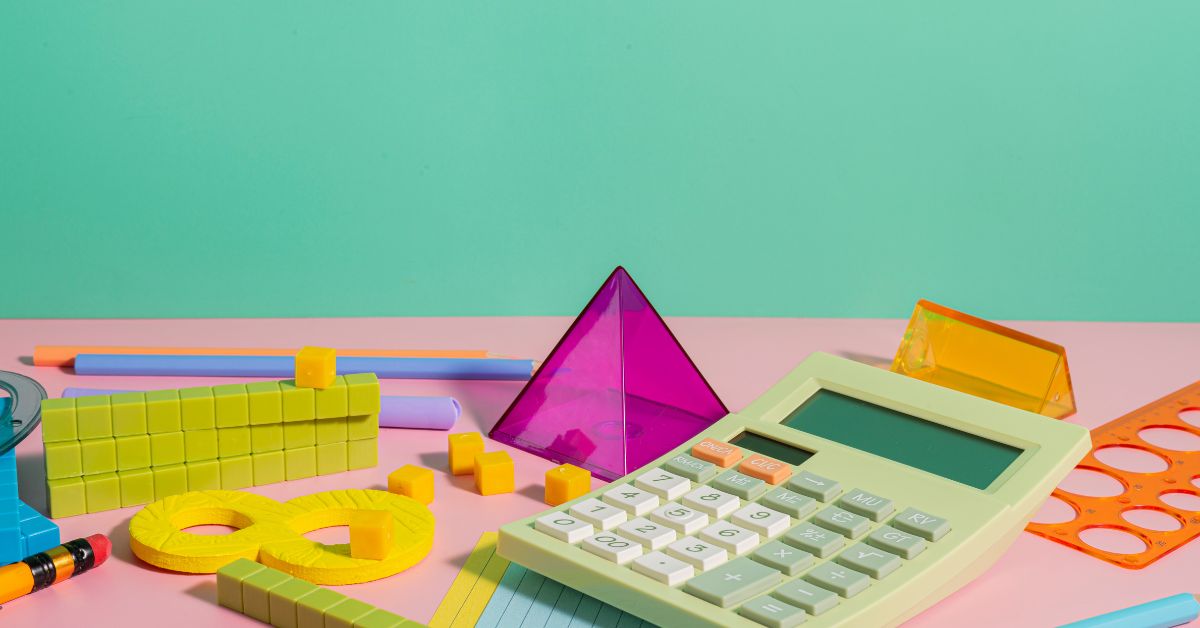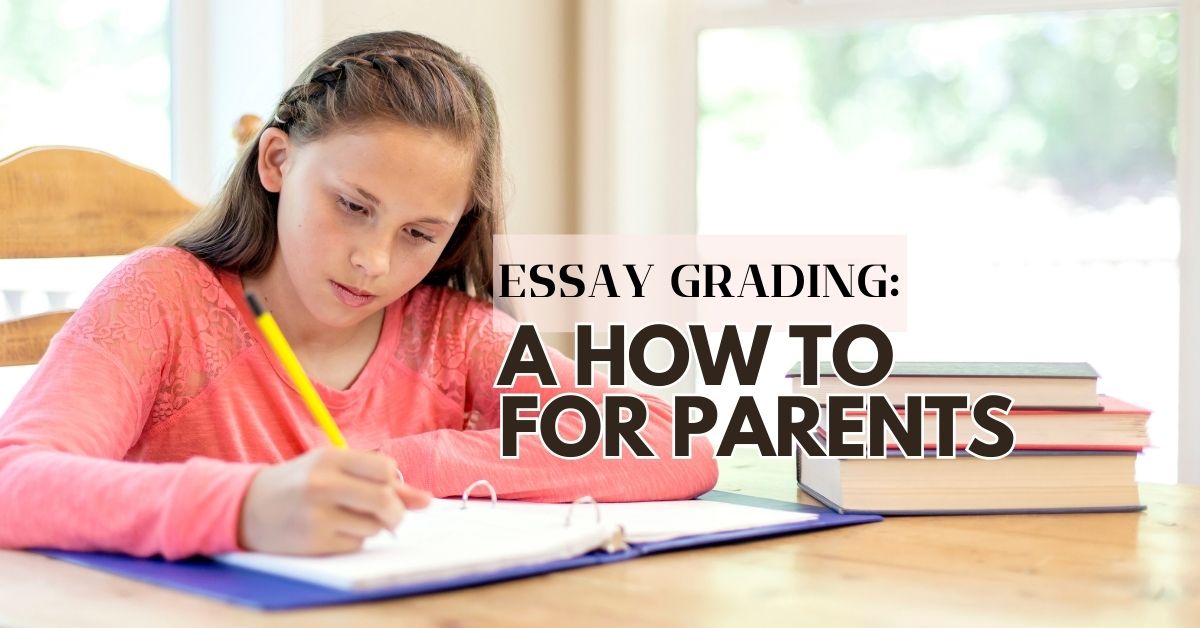Learning geometry can be challenging, especially for visual learners who struggle with traditional teaching methods. Memorizing formulas or staring at abstract diagrams doesn’t always help these students make meaningful connections with the material. Instead, they benefit from seeing, touching, and interacting with shapes and concepts to truly grasp them.
Hands-on learning is a powerful approach for these learners. By actively engaging with lessons, they can explore geometry in a way that feels intuitive and fun. In fact, research shows that hands-on learning improves retention rates by up to 75% compared to passive methods. Engaging geometry activities designed for kids can make mastering geometry both effective and enjoyable, helping visual learners thrive.
Building 3D Shapes with Everyday Materials
One of the best ways to teach geometry is to make it tangible. For younger learners, building 3D shapes using everyday materials like toothpicks, marshmallows, straws, or clay is an excellent starting point.
Here’s why it works:
- Creating shapes helps kids visualize edges, faces, and vertices.
- It reinforces concepts like the difference between 2D and 3D objects.
- It connects geometry to real-life objects.
For instance, ask kids to build a cube using toothpicks and marshmallows. Encourage them to count the edges (12), faces (6 squares), and vertices (8 corners). Once they’ve mastered the basics, challenge them to create more complex shapes like pyramids or prisms.
To take the activity further, connect it to concepts like volume and surface area. For example, once kids build a rectangular prism, have them measure the dimensions to calculate its volume. Using hands-on geometry lessons like this can simplify abstract math while boosting comprehension.
Paper Folding for Understanding Angles and Symmetry
Paper folding, or origami, is another fantastic way to teach geometry. This activity combines creativity with important geometry concepts like angles, symmetry, and geometric transformations. Best of all, it doesn’t require expensive materials—just paper and imagination.
Here’s how to use paper folding for visual learning in math:
- Teach symmetry by folding a square in half and showing where the folds match.
- Explore angles by folding triangles and bisecting them to show how smaller angles form a larger whole.
- Encourage transformations by folding paper into complex designs like cranes or stars, demonstrating how shapes change through rotation, reflection, and translation.
For example, fold a piece of paper in half to create a triangle. Repeat this process to make smaller triangles. Students can then identify acute, obtuse, and right angles at each fold. These hands-on activities help students internalize key geometry concepts while boosting their creativity.

Interactive Graphing with Coordinate Planes
A coordinate plane often intimidates students when it’s presented in a textbook. However, turning it into a physical and interactive experience can change that.
Start by using large-scale graph paper or creating a grid on the classroom floor with tape. Students can then “walk the graph” by physically plotting points or drawing lines. Here are some activity ideas:
- Have students walk between plotted points to explore slope and direction.
- Use colored tape to connect points, forming shapes like triangles or rectangles.
- Challenge students to recreate geometric graphs by walking specific coordinates.
This method helps students connect graphing to real-world applications, such as designing maps or understanding blueprints. By making graphing physical, kids can grasp abstract concepts like slopes and quadrants in an engaging and memorable way.
Tangram Exploration for Problem-Solving
Tangrams are an age-old tool for turning geometry into an interactive puzzle. A tangram consists of seven geometric shapes that can be arranged to form larger images or designs.
Here’s how tangrams support hands-on geometry lessons:
- They develop spatial reasoning by encouraging students to visualize how smaller shapes work together.
- They teach transformations as students rotate and flip pieces to fit them together.
- They connect problem-solving to geometry concepts like congruence, area, and perimeter.
Give students a specific shape (like a square or a cat) to form using their tangram pieces. Alternatively, have them create their own design and calculate the total area they used. This activity builds critical thinking skills while reinforcing fundamental geometry ideas.
Geometry Scavenger Hunts in Everyday Life
Sometimes, the best learning happens away from paper and desks. Geometry is all around us, and encouraging kids to look for it in their surroundings can create powerful “aha” moments.
Set up a scavenger hunt for students to find geometry in everyday life. Here are some examples of what they can look for:
- Shapes in architecture (triangles in roofs, circles in windows).
- Angles in furniture (right angles in tables, obtuse angles in chairs).
- Patterns in art and nature (symmetry in butterflies or fractals in shells).
Turn it into an exciting challenge by giving participants a checklist of geometric items to find. For example:
- A right triangle
- A tessellation pattern
- A circle and its diameter
Afterward, bring the class together to discuss what they found. Connecting geometry concepts to the real world makes the subject relevant and exciting, ensuring those lessons stick.
Why Hands-On Geometry Works
Students need a variety of tools to succeed in math, and hands-on activities are some of the most effective. These activities allow learners to move beyond abstract concepts and connect with math in a tangible way. For visual learners, studies show that hands-on methods can boost retention and understanding by up to 50%, making math feel more accessible and less intimidating.
Activities like building 3D shapes, folding paper, or using physical objects to solve problems engage multiple senses at once. This improves comprehension and builds students’ confidence as they see concepts come to life. By making math interactive and fun, hands-on learning helps students develop a stronger foundation for applying skills in real-world situations.
Try These Geometry Activities for Kids Today!
Mastering geometry doesn’t have to feel overwhelming. By using hands-on activities tailored for visual learners, parents and educators can make math both accessible and fun. These geometry activities for kids cater to different learning styles, giving students the opportunity to see, touch, and truly understand key concepts.
Whether it’s creating 3D models, folding paper, or hunting for shapes in their environment, kids will enjoy the experience of bringing geometry to life. Visual learning in math is about more than just helping kids pass tests. It’s about giving them the tools and confidence to see how math plays a role in the world around them.
If you’re looking for more resources or ideas to support your homeschooling, Dropkick Homeschool Resource is here to help. Head over to our website to discover more tips, tools, and activities designed to make learning engaging and effective!





